The Story of the Montana Sapphire
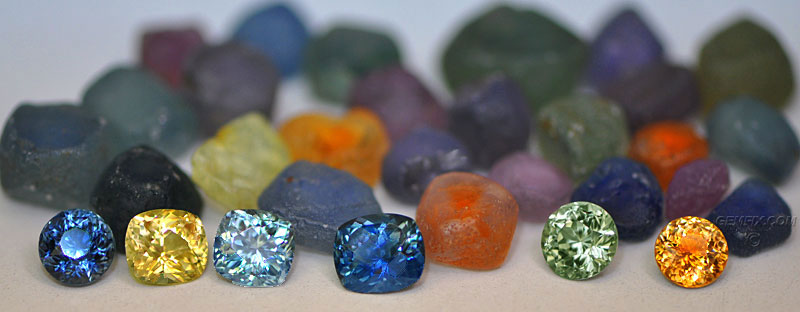
Although they have been mined for over 100 years, Montana sapphires have become increasingly popular in the last few years. Some of the most frequently asked questions about them are answered below.
Are Montana Sapphires Valuable?
Sapphires are one of the so-called “Big Three” precious colored gemstones: Sapphires, Rubies, and Emeralds. These three have been the most famous and desired colored gems throughout history. What makes Montana sapphires even more valuable to many people is the way they are ethically sourced and mined, with consideration for the environment and an easy to trace “mine to market”. Just as with other sapphires, a Montana sapphire’s value (and price) will depend on its color, clarity, cut, and carat weight.
Are Montana Sapphires Rare?
Montana sapphire is not found in very large rough pieces. Considering that a rough nugget will yield a cut stone only about 1/3 of the original size means that large, fine quality faceted Montana sapphires are very rare. It is uncommon to see a fine quality faceted Montana sapphire weighing over 2 carats, gems over 3 carats are extremely rare.
Where Can I Find Montana Sapphires?
Right now, Montana sapphires are found in three main places: The Missouri River near Helena, Rock Creek near Philipsburg, and Yogo Gulch.
Since 1993 Gemfix has carried Montana sapphires and was one of the first companies offering them for sale on the internet. We still have one of the best selections and widest variety of beautifully hand cut Montana sapphires because they are Andrew’s personal obsession! He has been collecting them for decades. The larger ones we have were mined in the 1970’s and 1980’s, and were obtained from private collectors, often from the original miners and their families. As with all our stones, we cut for maximum beauty, not size. Nearly all of our Montana sapphires are cut by Andrew himself. (He really is obsessed!)
A Short History of Montana Sapphire…
Ethics and Transparency
Due to the increased awareness globalization has brought, many of us appreciate Montana sapphires not only because of their beauty, but as ethically sourced gems with an easy to trace supply chain, guaranteed conflict-free, and naturally fair trade!
Another thing we can thank the Montana sapphire for is also related to ethics. Full disclosure of heat treatment is something most consumers can (and should) take for granted today, but this hasn’t always been the case. In the early 1980’s heat disclosure became a burning issue (no pun intended), and this was to a very large extent, thanks to the marketing of the little blue unheated Yogo sapphire from Montana. Once again, Montana sapphire became the champion of ethical and transparent business practices!
Discovery
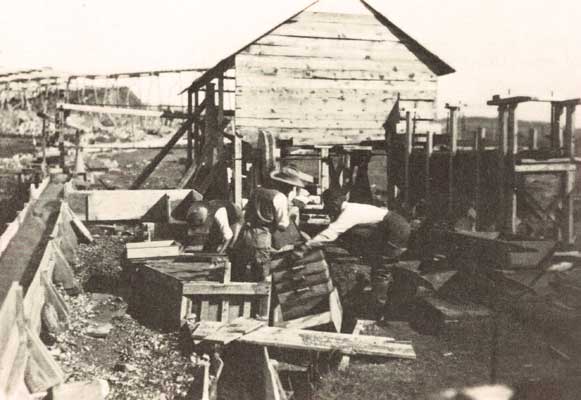
Montana sapphires were first noticed by gold miners in the 1860’s, but because gold was so much easier to identify, mine, value, and subsequently sell, the pretty pebbles were largely ignored. After all, they would have to be faceted and polished to be marketable, and this was done in Europe, or even New York, but not in Montana!
Although Montana sapphire was officially discovered in 1865, the first published mention of the existence of the Missouri River sapphires was not even made until 1873 by Dr. J. Lawrence Smith, who wrote about them in the American Journal of Science.
George Frederick Kunz, the foremost U.S. gem expert of the times and gemologist with Tiffany & Co. was among the first to recognize the beauty of the Montana sapphires found in the Yogo Gulch area.
But why did Montana’s sapphires take such a long time to be appreciated by Americans?
There were no real gem cutting facilities. European gem cutting dominated and American cutters were decades behind. It was nearly impossible to market rough stones to the American public.
Foreign Interest
Several years after its initial discovery, Montana sapphires were attracting little attention by Americans, but were being investigated by a British firm. In 1890, London gem merchants Edwin W. Streeter and Horatio Stewart went to Montana to quietly inspect the Missouri River bar. The following year, 3,900 acres (over six square miles) including the prime sapphire-bearing placers on Eldorado Bar, were acquired by The English Mine company.
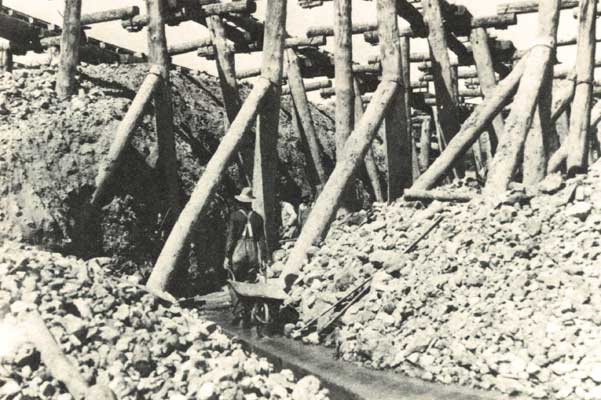
By the 1930’s, nearly all the rough was being shipped to Europe and costs were not keeping up with the output. However, because of WWII, Montana sapphires of lower quality were used in industrial applications in gauges, scales, electric power meters, compasses, and airplane and navigational instruments. This temporarily boosted production and profitability into Rock Creek and the Missouri River bars. After the war ended though, the mining operation was put up for sale.
Back in American Hands…
This time there was a great deal of interest on the part of American companies, they were not going to lose out to foreign interests again! The first one to move toward purchasing the mine was the Yogo Sapphire Montana Company, which, after a lengthy negotiation period, finalized the transaction in 1956. Unfortunately, negotiations had taken so long, a decade, that operating capital was gone. They reorganized under the old British name, the New Mine Sapphire Syndicate and from 1957-1959 mined around 50,000 carats of sapphire, of which only about 4,000 carats was probably of gem quality. Once again, production costs were higher than profits and it ceased operations in 1959.
It then sat idle for several years being temporarily “leased” to interested parties. One group, headed by Arnold Baron, decided for the first time to also cut and market the gems, not just rough material, in order to make the mining operation financially feasible. Cutting was done in Thailand and Germany, but when marketed in the US, these Montana sapphires were initially met with resistance. Why? Baron explains:
“We were pleased with the results in cutting and marketing. At first we encountered more resistance to the Yogo in this country than we did abroad…Some Americans thought it wasn’t a sapphire unless it came from the Orient. Eventually the American consumer reacted very well to the Yogo, and so did the dealers.”
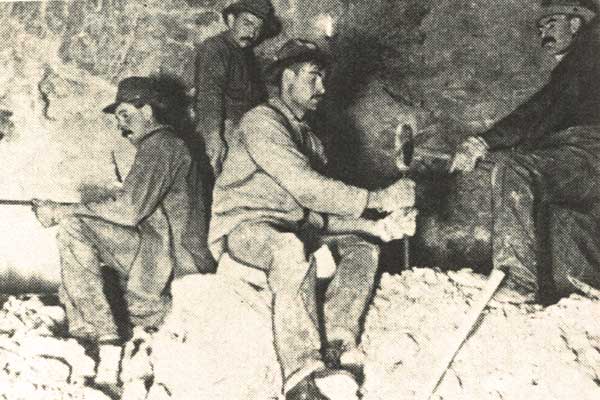
After Baron’s lease expired the mine was sold to a company called Sapphire Village in 1968. They were to be the first company that planned to cut the stones right here in the US, on German-imported equipment, though this never seems to have materialized. It also had the novel idea of letting amateur gem hunters, “rockhounds” in to prospect –as long as they bought adjoining lots in “Sapphire Village”. This was probably one of real estate’s most unusual subdivisions! Lot owners were limited to “mining” 100 pounds of dirt per day.
Four years later, one of the original partners, Chikara Kunisaki of Oxnard, California, bought out the others and started “Sapphire International Corporation” in 1973. The owner sank $5 million dollars into equipment and mining methods that proved to be ineffective for the geology, such as digging an expensive 3,000 foot long tunnel. He was bankrupt by 1976.
Recognition as A “Royal” American Treasure
In 1978, another entrepreneur, Victor di Suvero leased the mine from Kunisaki and changed the name to “Sapphire-Yogo Mines, Inc.” His angle? Promotion was his specialty and he directed his attention toward marketing and advertising on a scale never before attempted. His approach was effective enough to be mentioned in JCK (Jeweler’s Circular Keystone) trade magazine in 1978. Over 100 years after being discovered, this was the first official trade recognition of Yogo sapphire!
The article sounds surprisingly modern. Di Suvero hits on points we still appreciate about Montana sapphires:
“’Diamond prices are much too high’, di Suvero says. ‘So we’re telling Americans of all ages and life styles that we’ve got a real alternative to diamonds—one that is reasonably priced, beautiful, of lasting value and a product of their own country. We think that’s an unbeatable combination of factors.’”—JCK Magazine
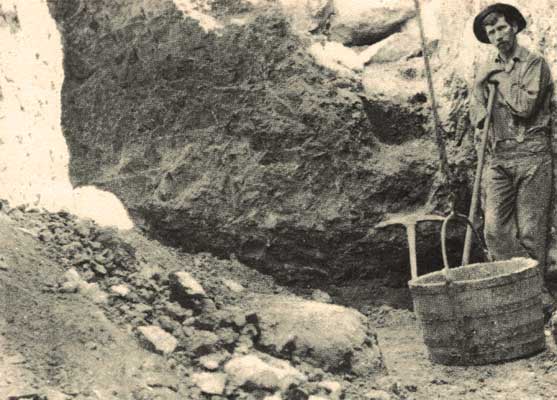
Unfortunately, di Suvero was unable to make timely payments, and in 1979 he lost his lease. When Chikara Kunisaki put the mine up for sale, it was purchased by American Yogo Sapphire, Ltd., the 14th American company to try its luck with the mine. Unlike all its predecessors, this company hit upon the idea of not only mining and cutting the sapphire, but of setting it in jewelry and marketing the finished pieces. In theory, this would ensure control of the stones from beginning to end, from mine to consumer. In 1982, the company’s name was officially changed to “Intergem, Ltd.” The “Yogo Sapphire” was re-christened as “The Royal American Sapphire”.
By the end of 1984, there were over 1,000 stores carrying Intergem’s “Royal American Sapphire”. Overhead was high, property taxes had increased substantially and inability to make loan repayments resulted in Intergem’s loss of the mine in 1986.
“Vortex Mining” began operations in the hills west of the Yogo Dike in 1985 and when Intergem shut down, was the sole mining source of Yogo sapphires for years. It closed down in 2004 and was purchased in 2008 by Mike Roberts. Sadly he was killed in 2012 in a tragic mining accident, and ownership of “Roberts Yogo Sapphire Company” remains in the hands of his family, as of September 2016.
From 2011-2014 3,000 acres of Montana sapphire-producing land near Philipsburg was acquired by Potentate Mining, which is also mining gold.
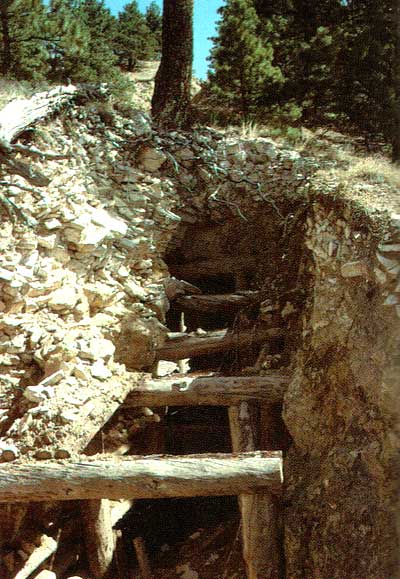
Montana Sapphires and Famous People
Charles M. Russell, also known as C.M. Russell, is considered with Frederic Remington to be one of the two greatest artists of the Old West. Charles moved to Montana when he was 16 and claimed to have learned most of his frontier skills from Jake Hoover. Jake was the Montana gold miner who first noticed the little blue pebbles -that turned out to be Yogo sapphires.
George Frederick Kunz, the foremost U.S. gem expert of the times and gemologist with Tiffany & Co. was among the first to recognize the beauty of the Yogo sapphire. It was on his desk that Jake Hoover’s cigar box landed, filled with the little blue sapphires from Montana. Dr. Kunz was a great lover of colored gems, especially American gems. He even had a gem named after him by a fellow gemologist in 1902, “Kunzite”, the lilac pink variety of spodumene discovered in California.
John Pierpont “J.P.” Morgan the famous financier is also considered America’s foremost patron of the arts at the turn of the 20th century. Among other things, he was an avid collector of gems and a faithful Tiffany’s client. He commissioned George Frederick Kunz to create several important gemstone collections. These he donated to the American Museum of Natural History in New York City. 29 Yogo sapphires in the collection can be seen today in the Morgan Memorial Hall of Gems. Interesting trivia: The violet pink variety of beryl discovered in Madagascar in 1910 was named “Morganite”, in his honor by Tiffany & Co.
President Warren G Harding’s wife Florence, received a ring of Montana gold and a Yogo sapphire from a Great Falls, Montana jeweler in 1923.
In 1952, Charles Gadsden, supervisor of the English Mine at Yogo Gulch, presented cut Yogo sapphires to President Harry S. Truman’s wife Bess, and daughter, Margaret.
Rumors say that the blue sapphire worn by Princess Diana and now by Kate, Duchess of Cambridge, was a Montana sapphire mined when the British still had control. This idea was ‘suggested’ in 1984 by the then-owner of the Yogo mining company, Intergem, Dennis Brown, interviewed in an article in the Los Angeles Times. Not likely!
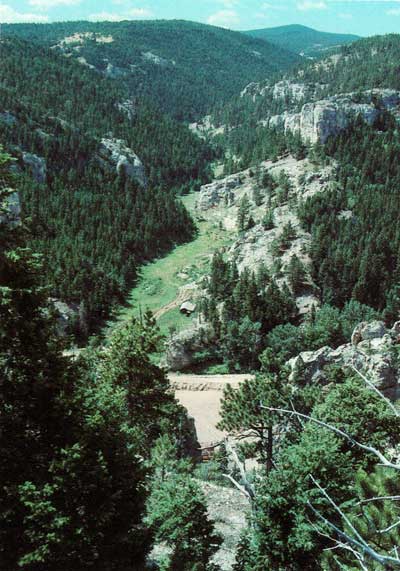
-Copyright 2016-2023 Gemfix Inc.-
No part of this article may be reproduced or distributed without express written consent of the author
*Excerpts and Photos Credit: “Yogo, the Great American Sapphire”, Stephen M. Voynick, 2001 ed.